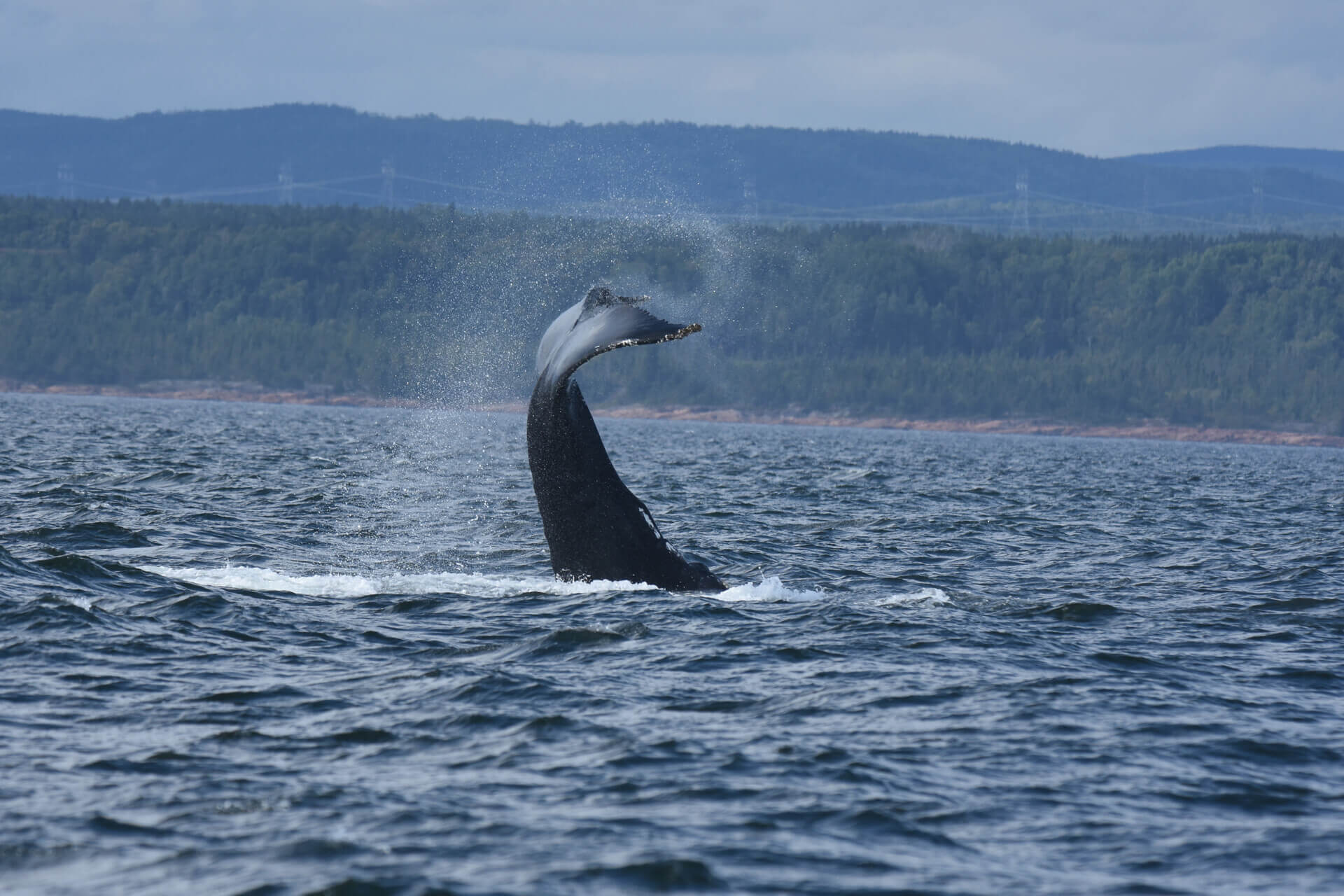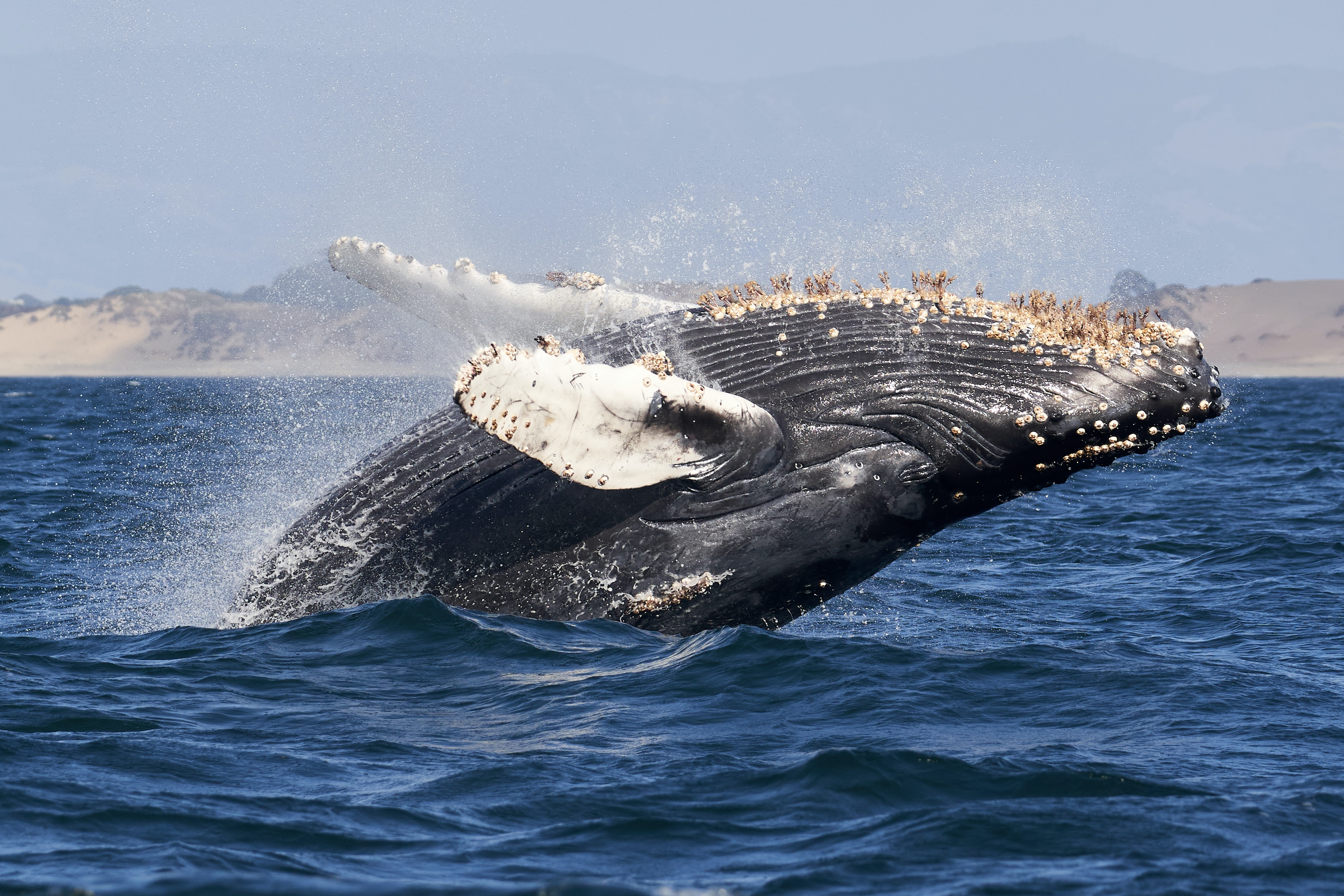Associations between individuals of the same species are well documented in toothed whales. Indeed, the formation of social “clans” has been studied most notably in sperm whales, killer whales and belugas. However, this phenomenon is less well understood in baleen whales. Overall, in baleen whales such as rorquals, associations between individuals of the same species are rare, short-lived and variable.
Blue whales are supposedly solitary, but they can communicate over hundreds of kilometres thanks to their low frequency sounds. It is therefore difficult to assess the “size” of the group. They are usually seen singly or in pairs. In late summer and early fall, duos composed of a male and a female are formed. Sometimes a third individual, often a male, approaches the pair and the group then engages in a “race” at the surface. The female continues to swim with the “winner” of the race. This behaviour has also been observed in humpbacks, but these associations quickly break up beyond two weeks.
In the humpback whales of the St. Lawrence, stable and repeated pairs of non-lactating females can form for up to 6 consecutive feeding seasons. It is still difficult to explain the reason for these associations, but these females have been shown to have better reproductive success. Lactating females, meanwhile, are less “social” and devote their time to caring for their offspring.
Hunting can sometimes drive individuals to form groups. Associations may vary depending on the type of prey. For example, krill is easier to hunt, which means that whales do not need to use specialized hunting techniques. Hunting herring requires greater effort; individuals must coordinate their actions to encircle the school of fish with a bubble net and emit feeding calls. These more or less stable groups do not seem to be governed by family ties. On the other hand, less experienced juveniles are believed to feed more often alone in order to avoid competition with adults. In the St. Lawrence Estuary, large groups of fin whales, sometimes over twenty of them, have already been observed feeding together in synchronized fashion.
A number of factors may be behind this “social” behaviour: competition for the best access to food, mutual cooperation to capture prey more easily, access to a breeding partner, protection of young, etc. However, it is difficult to identify and explain the cause of every circumstance.
To learn more:
Group foraging of humpback whales in Alaska: A study
Social associations of humpback whales in the St. Lawrence river





